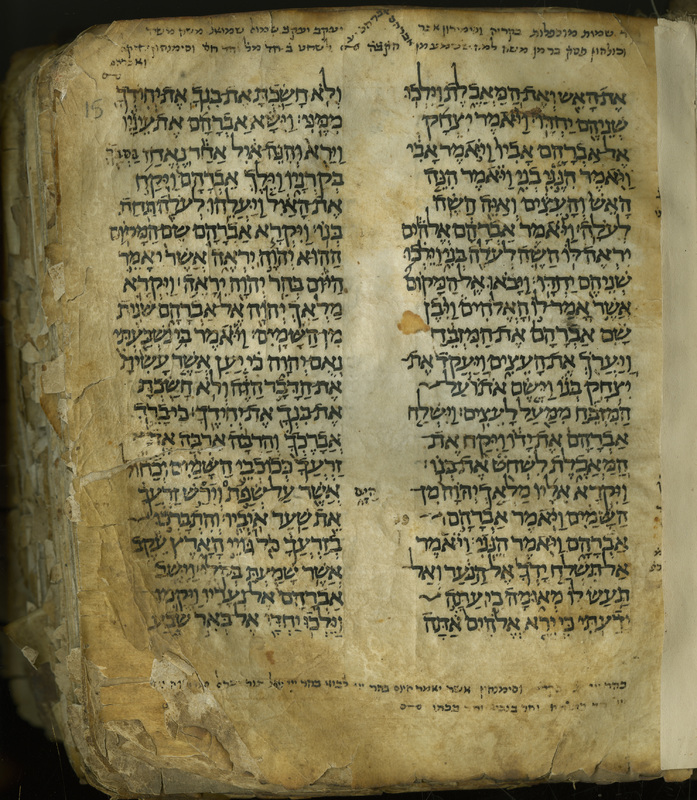The Hebrew Bible
It is likely that historians began to put into writing the sacred stories of the people of Israel during the eighth century BCE. Indeed, these ancient writings constitute the first layers or foundations of the Torah or Pentateuch, that is, the first five books of the Hebrew Bible. From the very beginning, the Bible was a fluid text since biblical scholars did not hesitate to modify earlier accounts and incorporate new stories that reflected the needs and anxieties of each generation. For instance, there are two separate competing accounts of Creation and two versions of the Flood!
While in the third century BCE some Jews began venerating the Bible as a sacred text, the majority of the Jewish community still worshipped their God in the Temple of Jerusalem. However, a dramatic shift took place when, following the Jewish revolt of 66 CE, the Roman army sacked Jerusalem and destroyed the Temple in 70 CE, expelling the Jews from their homeland. The Hebrew Bible then became a holy symbol of Jewish identity that accompanied the Jews during a centuries-long exile lasting until the creation of the state of Israel in 1947.
When was the text of the Bible first established as canonical? A council of Jewish rabbis was held in Jamnia, south of Jaffra (the southern and oldest part of Tel Avid) about 100 CE in order to determine the content and wording of the Hebrew Bible. Led by Rabbi Akiba, a community of scholars decided to turn the Scriptures into an exclusively Hebrew text by rejecting the Septuagint, which was a translation of the Old Testament into late classical Greek undertaken in the third century BCE. The council also established what books must be included. Some books that had been in the Septuagint were eliminated: Baruch, Wisdom, Ecclesiasticus, Tobit, Judith, and I-II Maccabees. However, these rejected texts would be adopted by the early Christians.
Above and below are images of three pages from a tenth-century manuscript of the Torah or Pentateuch (Mich. Ms. 88), which consists of five books: Genesis, Exodus, Leviticus, Numbers, and Deuteronomy. The pages contain the account of the Binding of Isaac (Genesis 22). The two columns of the main text are written in a professional square script of which there are very few extant examples. The so-called Masorah (a set of rules of pronunciation, spelling, and intonation of the Bible designed to preserve and transmit the text accurately) is written in a mashait hand (formalized cursive script) and added in the margins and between the columns. A manuscript like this would have been written by up to four different scribes, including the main scribe for the consonant text, the naqdar or vocalizer, the accenter, and the masorete, who wrote the Masorah. As regards our manuscript, it seems that there were two scribes who wrote the consonant text and the Masorah respectively. Probably, a third scribe wrote both the accents and the vowels.
While this codex contains only the Torah, the entire Hebrew Bible would include two more parts:the Nevi'im, or Prophets, and the Ketuvim, or Writings.

The Greek Bible



